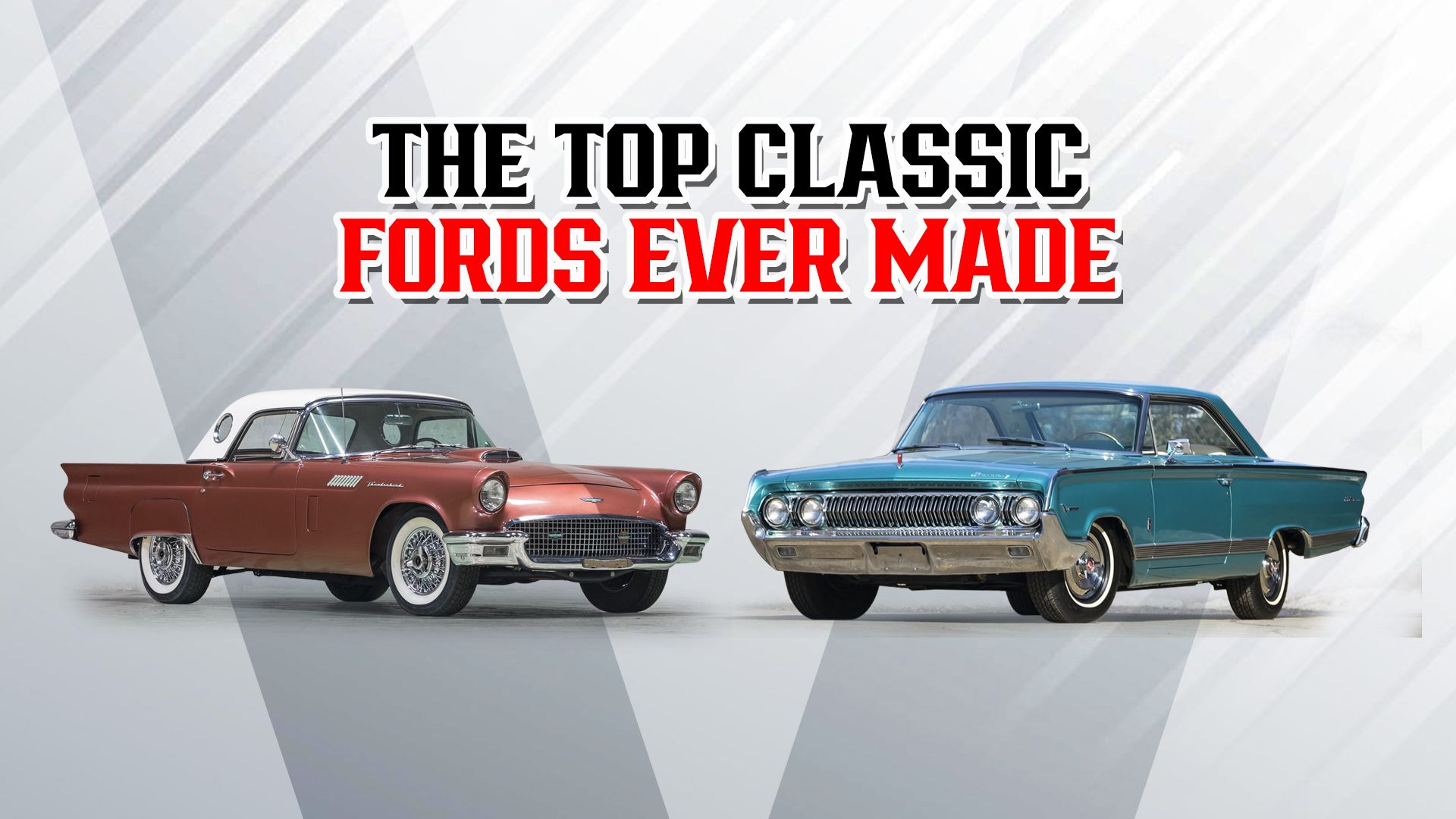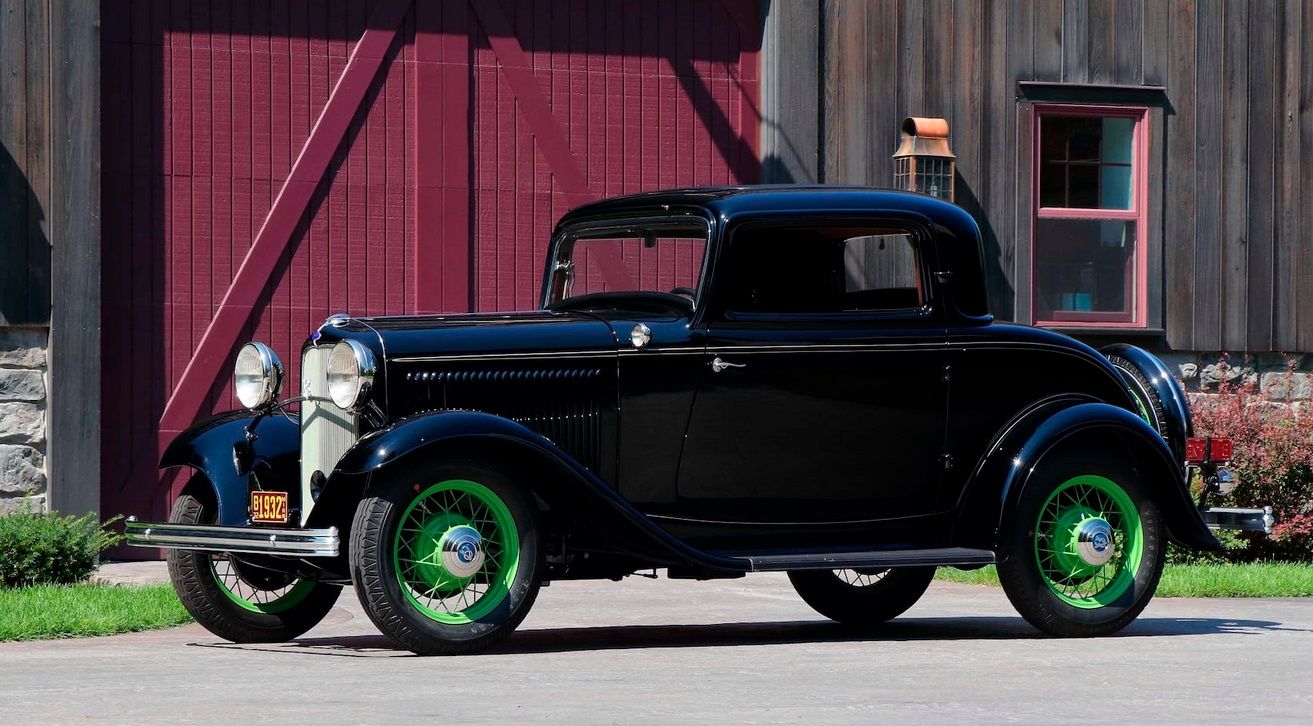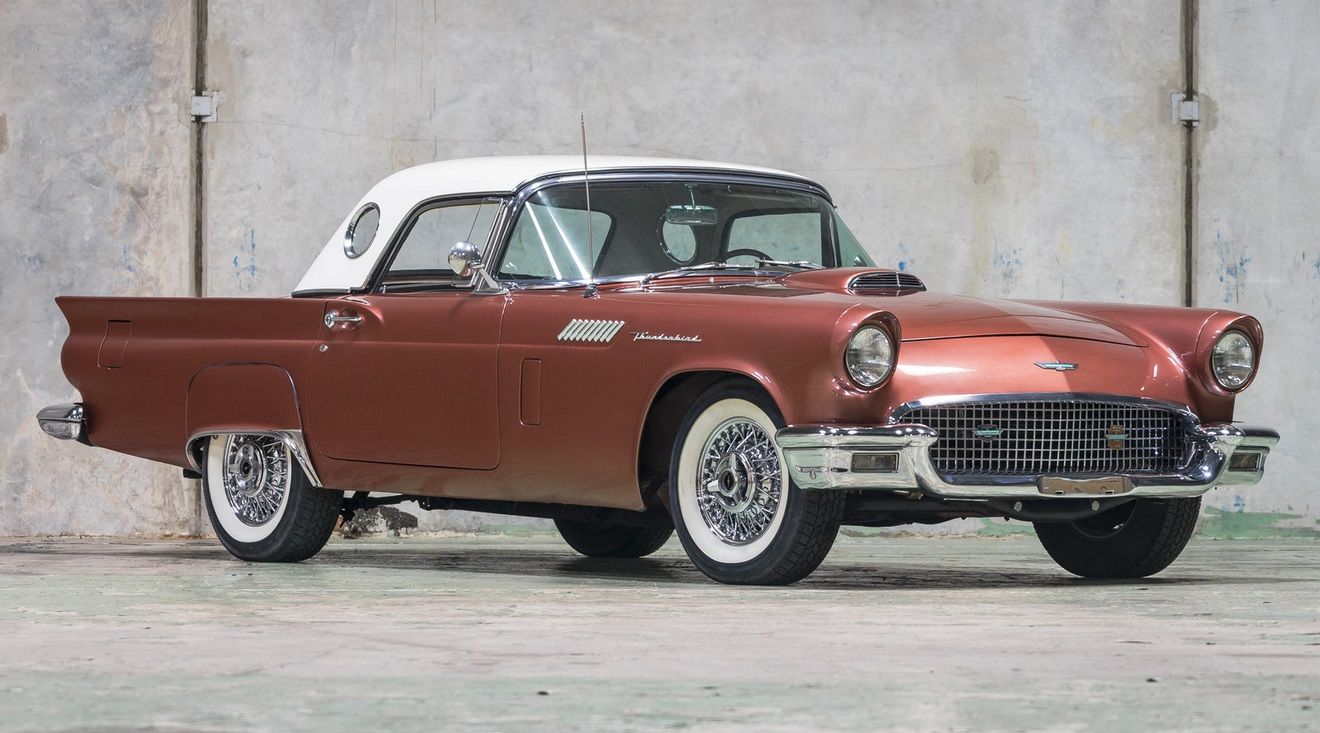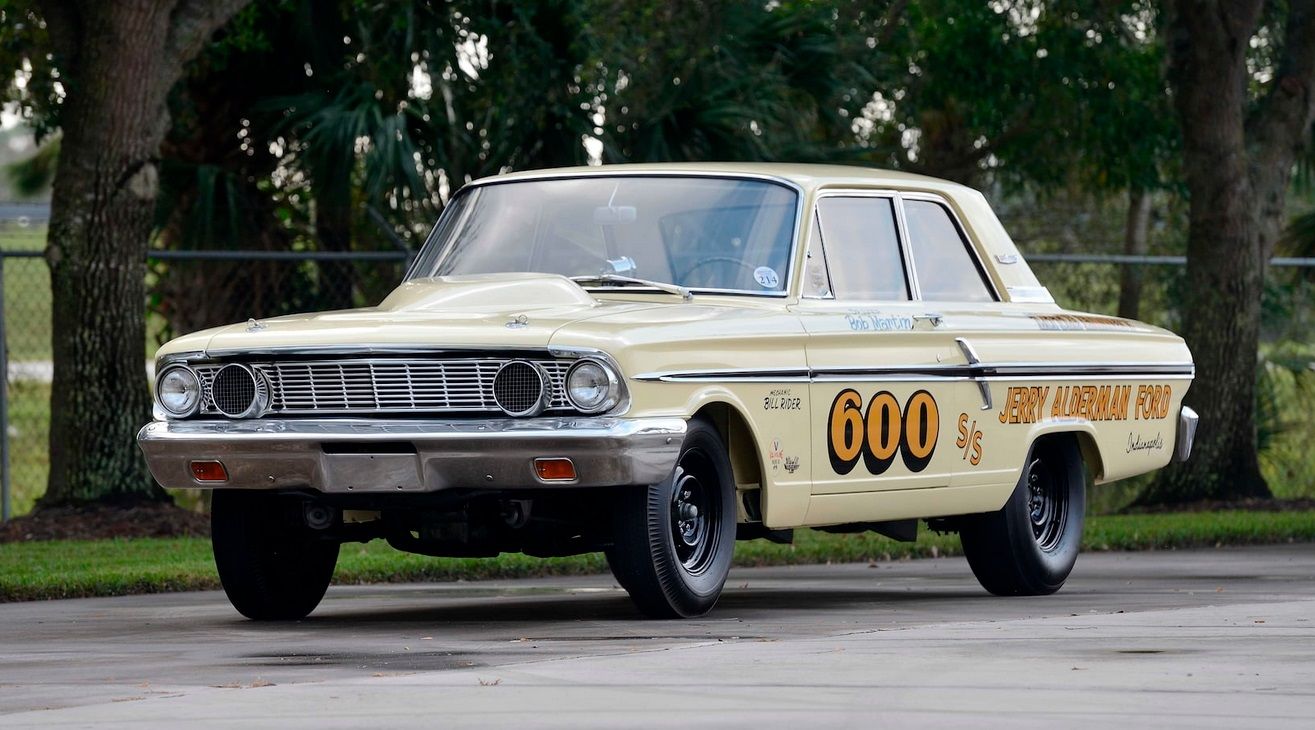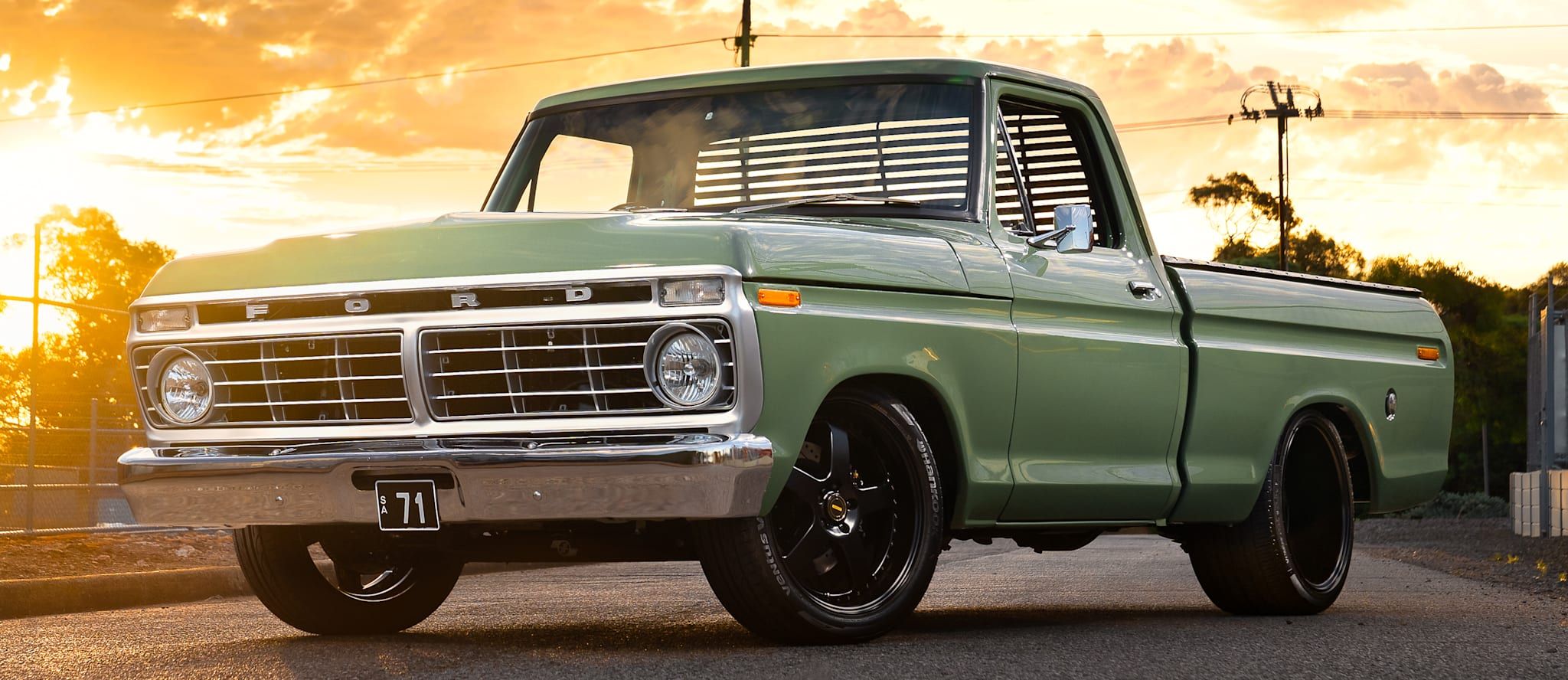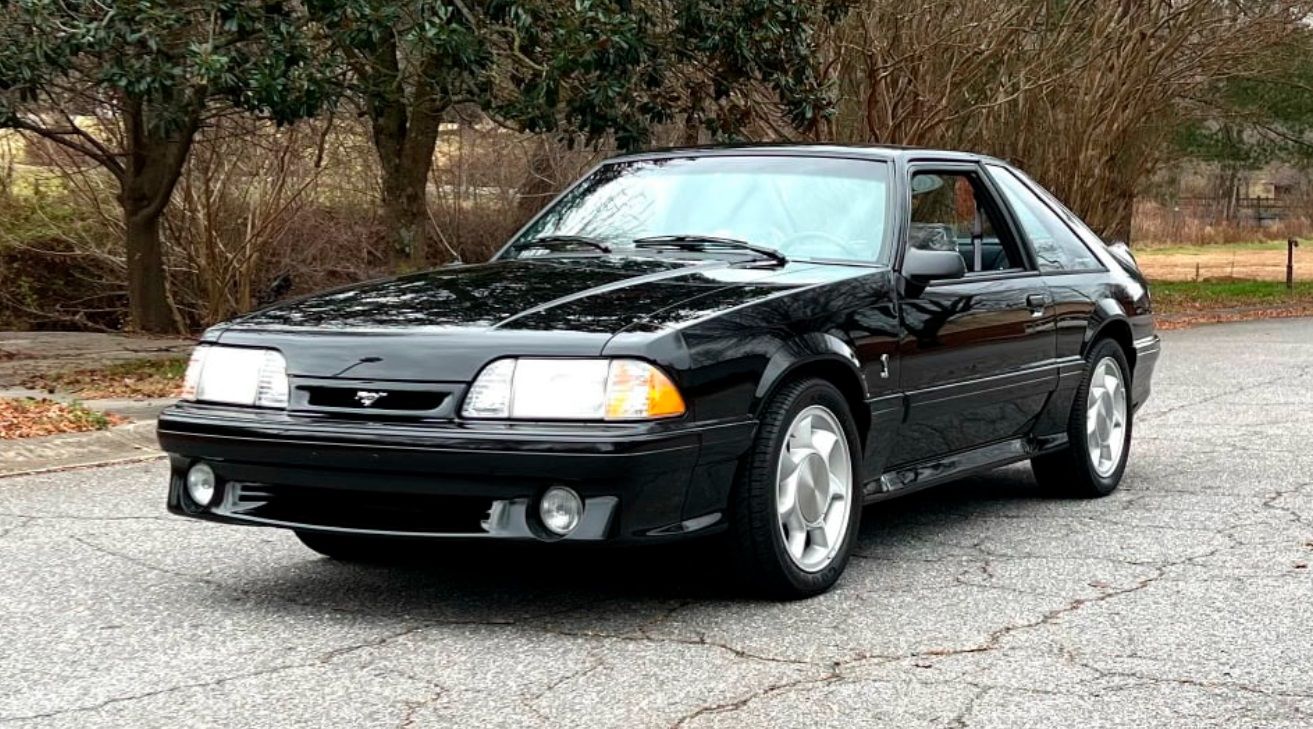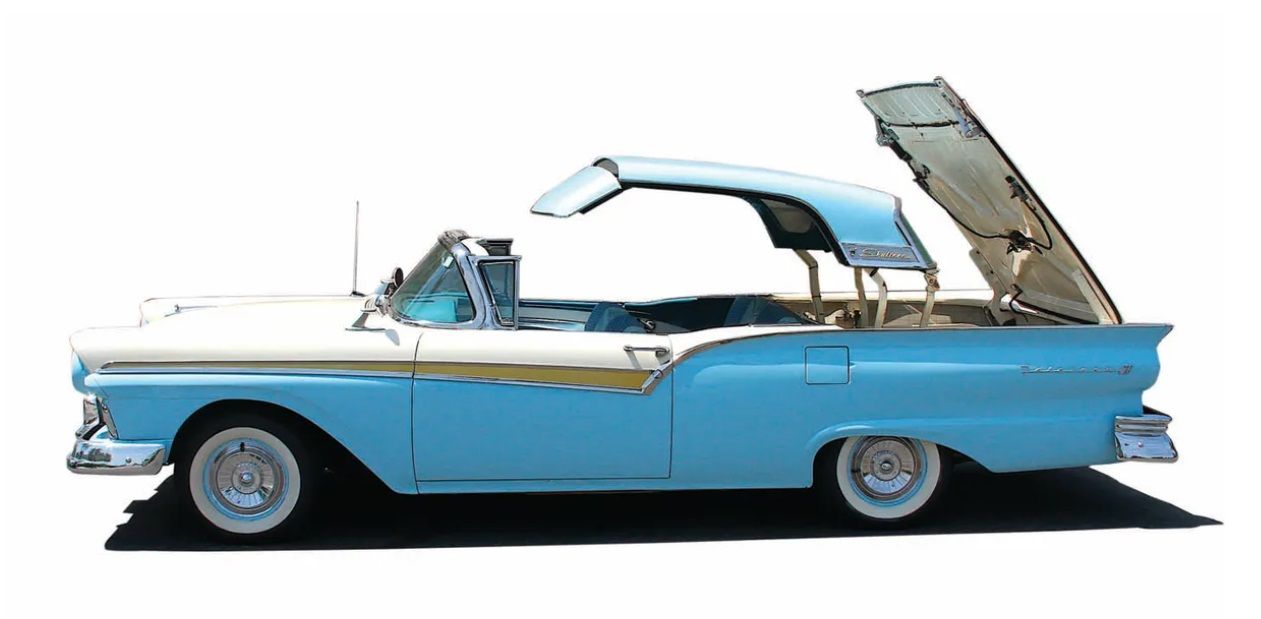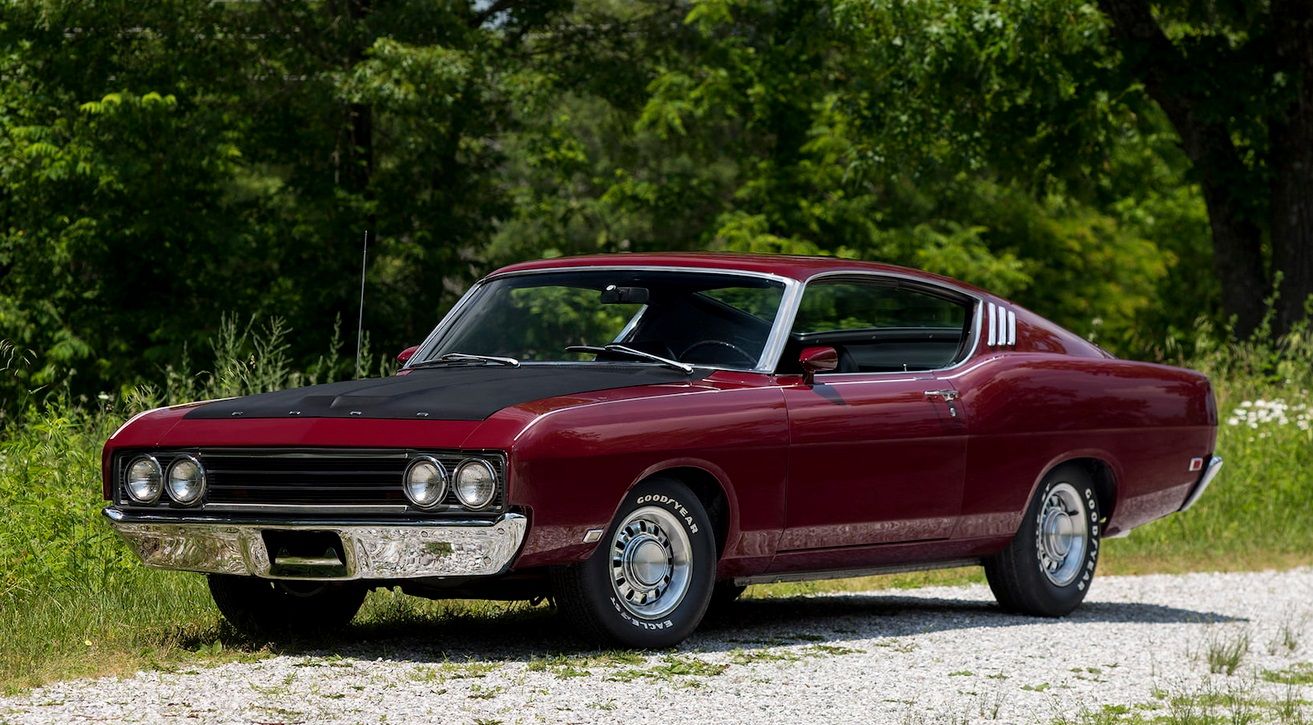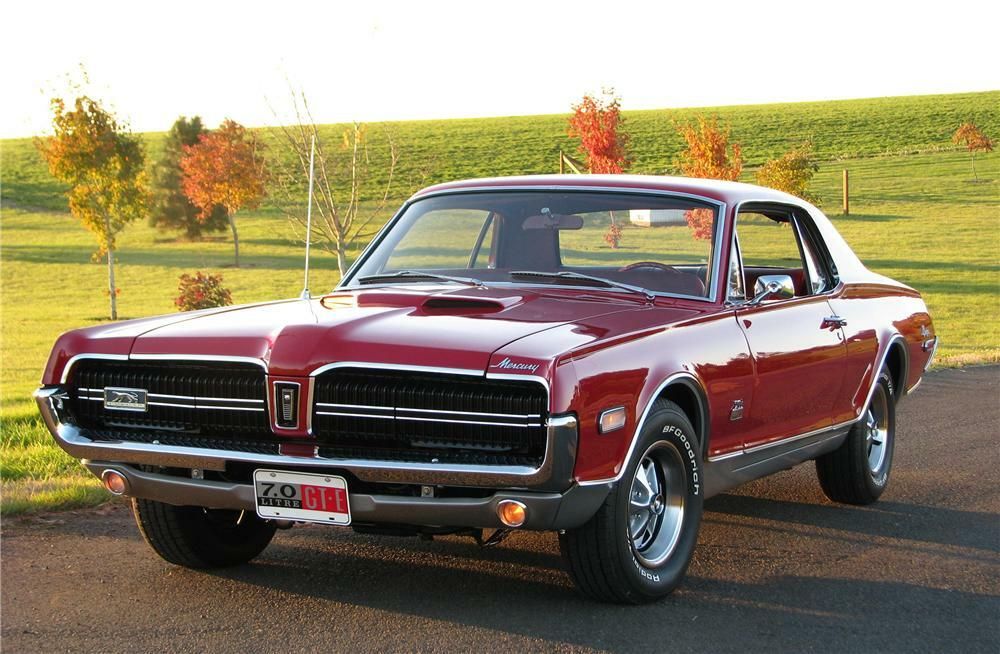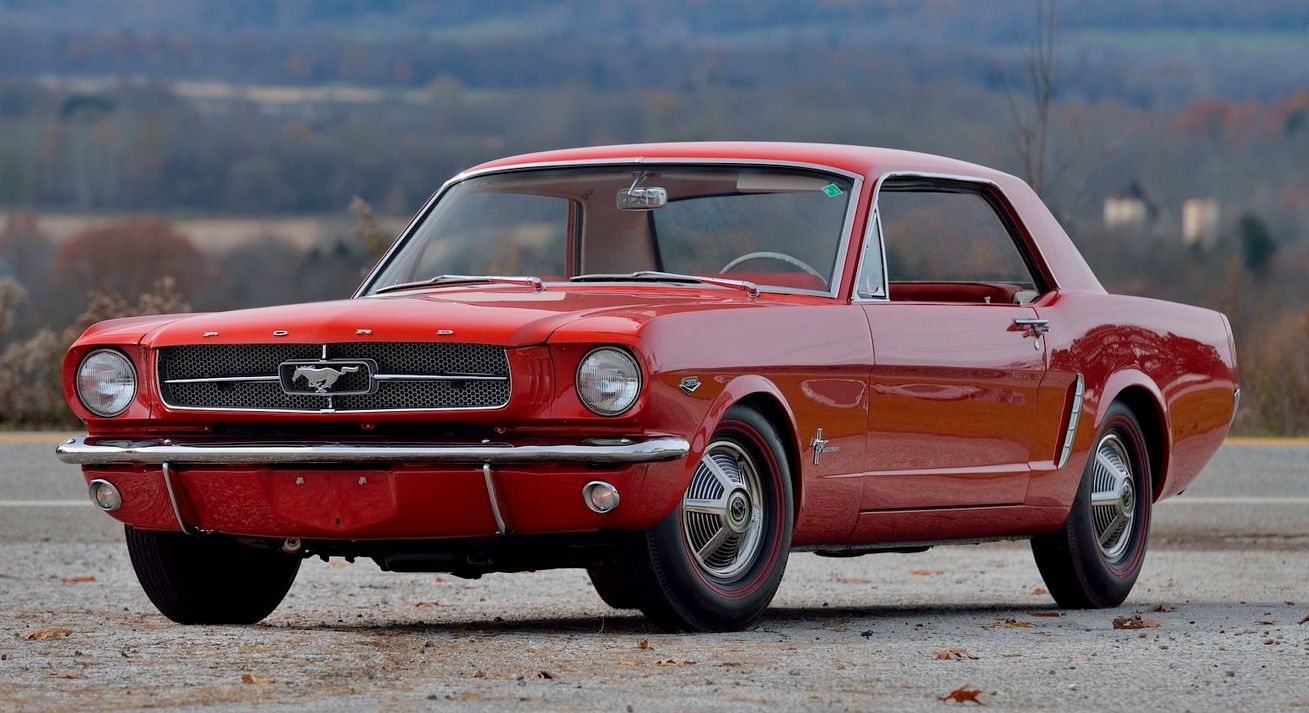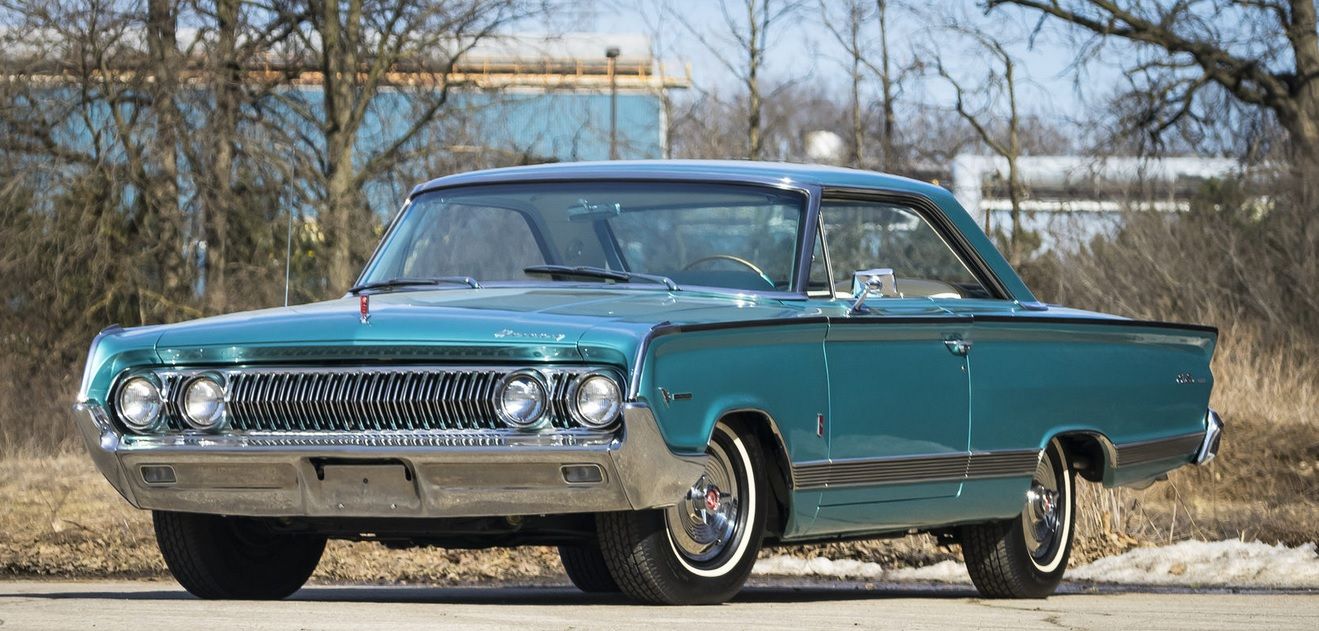Ford has arguably changed the game more than any other manufacturer in the American automotive market. From the Model T that brought an affordable car to the everyday consumer, to the first mass-produced V-8 to popularizing the “Pony Car,” Ford has constantly been a game changer and trendsetter for the American car-buying public. Today, we look back on a century of car-making history to pluck ten of the best that the Ford Motor Company produced.
1932 Ford Model 18
When Ford dropped the Model 18 in 1932, America was in the depths of the Great Depression. What made the Model 18 so revolutionary is that it was the first car with a V-8 engine created for the average American consumer. Until the Model 18, V-8 engines were the dominion of higher-end luxury cars. Ford engineers, often battling against Henry Ford, worked diligently to create a V8 that was cheaper and quicker to manufacture, thus putting it into the reach of the ordinary American. Due to the internal fighting at Ford, the initial Flathead Ford V-8 was plagued with multiple problems. Excessive oil consumption, faulty pistons, overheating, and a problematic ignition system were all common complaints. However, the engine was more powerful than the inline four-cylinder alternative, and over the next few model years, the engine became more reliable and powerful. Very popular with bank robbing bandits as getaway cars, the Ford V-8 received much free press. Following the Second World War, the Flathead Ford and the 1932 Model 18 became a favorite of the burgeoning hot rod scene and helped birth the nascent sport of drag racing.
1957 Supercharged Ford Thunderbird
In 1955, the Ford Thunderbird entered the market to fight against the then-two-year-old Chevrolet Corvette. Initially, Corvette sales for the ‘53 and ’54 model years were disappointing. However, Ford knew that for 1955, Chevy was giving the Corvette a facelift and installing a new 265 cubic inch V8 to replace the inline six-cylinder. So, when the Ford Thunderbird hit the scene, the sporty two-seater featured the venerable 292 cubic-inch Ford Y Block V-8. Ford crushed Chevrolet in sales with 16,000 Thunderbirds sold to just 700 Corvettes. By 1957, with Chevrolet introducing a larger 283 cubic-inch V-8 available with mechanical fuel injection, Ford upped the ante again by adding the option of a Paxton supercharger to their 312 cubic-inch Y block. While Chevrolet’s “fuelie” 283 produced an impressive for the time one horsepower per cubic inch, the forced induction 312 Ford pumped out 340 horsepower. Again, the Thunderbird smashed Corvette sales for the third year in a row, selling 21,000 T-birds to just 6,300 Corvettes.
1964 Ford Thunderbolt
The late 1950s and early 1960s saw an explosion in the popularity of drag racing in America. The “Big Three” of Ford, Chrysler, and General Motors all got in on supporting teams directly in the Super Stock class. These factory-supported race cars were used as a marketing tool. Seeing that wins on Sunday sold cars on Monday, the auto companies pumped out interesting race cars that the average American could order through their local dealer. After 1962, GM dropped its support leaving Ford and Chrysler to battle it for supremacy. Ford possessed the powerful FE engine, but installed in full-sized and heavy Galaxies, they struggled against the smaller and lighter Mopars with their “Max Wedge” engines. For the 1964 season, Ford decided to contract with the Dearborn Steel Tubing company to take 100 midsized Ford Fairlanes and heavily modify them to shave weight and accept the larger 427 cubic-inch FE engine. Steel was replaced by lighter fiberglass and aluminum wherever possible, the steering and suspension modified to work with the larger FE big block, and unnecessary equipment such as heaters and radios discarded to save weight. The resulting car was technically street legal but entirely impractical for road use. However, as a drag car, it successfully fought and narrowly defeated the 426 cubic-inch Max Wedge Chrysler cars in the 1964 season.
Ford F-100/F-150 “Dentside”
While many classic Ford trucks are legitimate candidates to make this list, the current champion in terms of popularity is the sixth generation F100 series, affectionally called the “dent side” for its long, indented body line that runs down the cab and box. Produced from 1973 to 1979, these, along with their Chevrolet “square body” counterparts, exploded in popularity and collectability in recent years. Ford introduced some notable improvements for this generation of the F series, paying more attention to corrosion prevention and occupant safety. More rustproofing technologies were employed in the manufacturing, such as extensive use of galvanizing for body panels. The gas tank was relocated from behind the seat to under the bed for safety. This also freed up space behind the seat for storage, an excellent convenience lacking in previous generations. Although a product of the “malaise era” that killed horsepower, the dent side F series remained capable as lower RPM engine torque figures were still relatively healthy. Available with a variety of inline-six and V8 engines, the F-100 was joined by the slightly stouter F-150 in 1975. Featuring a more robust suspension, the F150 eventually eclipsed and replaced the F-100 entirely in Ford’s lineup.
Ford Foxbody Mustang
Following one of the most maligned Mustangs of all time, the Mustang II, the model's third generation hit dealer lots in late 1978 and proved incredibly popular. Small, lightweight, with a decent selection of powerplants ranging from four cylinders to V-8s, the new Fox platform was lightweight and handled well. Currently enjoying a renaissance of popularity due to ‘80s and 90’s nostalgia and a great platform for drag racing, the Fox body Mustang has been steadily climbing in value and collectability. The car received minor facelifts in 1983 and 1987, with the High Output 5.0-liter V-8 equipped later Mustangs being especially popular due to the updated fuel injection and hydraulic roller camshafts producing the most power. Other popular collectible models include the earlier Turbo GT and SVO turbocharged models featuring the 2.3-liter four-cylinder. Over 2.5 million third-generation Mustangs were sold over its 14-model year run.
1957 Ford Fairlane Skyliner
1957 was a good year for the Ford Motor Company. For the first time since 1937, Ford sold more cars than Chevrolet. Ford gambled that American consumers in the atomic age wanted a larger and more aggressive vehicle, and Ford went big while Chevrolet stayed with the same platform it had used since the 1955 model year. Ford was right, the larger Fords of 1957 proved incredibly popular, and GM followed suit a year with the first of their larger X-frame cars. One of the most exciting variations of the full-size Ford lineup for 1957 was the Fairlane Skyliner. The Skyliner featured a first for a mass-produced American vehicle, a convertible hardtop. The hardtop was folded and stowed in the car's trunk area using electrical motors instead of traditional hydraulics. This “hide-a-way hardtop,” as Ford called it, drastically limited trunk space, which hurt sales and helped make the Skyliner a rare and collectible Ford today. While incredibly complex, the hardtop’s electrical retraction system proved reliable and robust, although restoring the system is a complicated and expensive affair today. The Skyliner continued to be an option for 1958 and 1959 before being discontinued. It demonstrated Ford’s bold ideas of the era that helped it reclaim its sales title over Chevrolet for the first time in two decades.
1969 Ford Torino Talladega
The 1960s saw the popularization of many motorsports, and just as Ford entered the Super Stock wars of the early 1960s, it also fought hard in the growing sport of NASCAR. Chrysler's introduction of the 426 Hemi several years earlier disadvantaged the other automakers. Ford was confident that their new 429 Boss engine, a Hemi-style design, could compete; they also sought to increase their aerodynamic advantage. Thus, was born the Torino Talladega. Ford took the standard Torino fastback “sportsroof” and added a new front end to the car. The standard Torino grille and bumper tested terribly in wind tunnels, and the high speed encountered at tracks such as Talladega and Daytona hindered the car's top speed. Ford did many things to improve high-speed aerodynamics. The car’s front end was extended roughly six inches, a new grille assembly fitted, and a new tight-fitting bumper was created that doubled as an air dam. The car also had its rocker panels reshaped to allow the vehicle to be lowered, bettering its center of gravity, and helping to reduce drag. To comply with NASCAR rules, Ford needed to produce a minimum of 500 Talladega Torinos, and in total, 750 were made. It is estimated that Ford lost several thousand dollars on each one sold, so options were severely limited to minimize cost. Unlike the later NASCAR-bound Torinos, none produced for consumers featured the Boss 429 engine. Those found themselves into BOSS 429 Mustangs. All Talladega Torinos sold at dealerships featured the older FE big block in the form of the 428 Super Cobra Jet engine. Today these cars command a premium due to their rarity and history.
1968 Mercury Cougar GT-E 427
The Mercury Cougar debuted as an upscale option to the Ford Mustang for the 1967 model year. Well-appointed and styled, the Cougar generally lagged a little behind the Mustang as a performance car. However, one option package for one year gave the Cougar an engine that no production Mustang ever got, the legendary 427 FE big block. For the early part of the 1968 model year, a Mercury shopper could order the GT-E package with the last of the mighty 427 FE engines ever produced. Compared to the Shelby GT500 Mustang’s 355 horsepower 428 FE, the Cougar GT-E possessed 390 horsepower. Less than 360 Cougars with the 427 were made before production shifted to the cheaper to produce 428 engine in May of 1968. Not only does this make the car rare, but also the swan song of a legendary powerplant that powered icons such as the Shelby Cobra, the Ford Thunderbolt, and the Ford GT40.
1964 ½ Ford Mustang K Code
The introduction of the Mustang mid-way through the 1964 model year caused a seismic shift in the auto market in America and put an exciting spin on the nascent muscle car market formed by the introduction of the Pontiac GTO earlier that year. The Pontiac GTO arguably created the muscle car, but the Mustang created the “pony car” subset of the muscle car. While the Plymouth Barracuda, with its 273 cubic-inch V-8, beat the Mustang to the market by a few weeks, the oddly styled Plymouth missed the mark. The Barracuda’s styling was off, and the car was poorly marketed. Based on the proven Ford Falcon platform, the Mustang bought great European styling and V-8 performance and sold it well to the public via TV and print. For the Mustang buyer looking for maximum performance, the K code Mustang with the high revving “Hi-Po” 289 cubic inch Windsor V-8 was the best they could get. With an aggressive camshaft, robust rotating assembly, high compression, and free-flowing induction, the 289 Hi-Po engine made 271 horsepower. The package was the most expensive option on the Mustang, making K code variations rather rare among the 121,000 Mustangs sold in that half model year.
1964 Mercury Super Marauder R Code
To finish the list, we see another Mercury. Ford, trying to stay competitive in NASCAR, updated the rooflines of its full-size Ford and Mercury cars halfway through the 1963 model. Later that year, Ford discontinued the strong 406 cubic inch FE big block and brought the legendary 427 cubic inch FE to the market. While the R code Galaxies with the 425 horsepower 427 got much of the attention, the Mercury division brought out their version in the Super Marauder. In typical Mercury fashion, the Super Marauder featured the same fastback design as the Galaxie, got the same potent powerplant, but had more luxurious interiors and upscale features standard versus the more practical Ford. However, unlike the 427 equipped Galaxies, these are remarkably rare. In 1964 Ford produced 3,100 R code Galaxies with the full spec 427. By comparison, Mercury made just 42. The Super Marauder R code is among the top Mercurys for connoisseurs of rare Ford performance cars.

